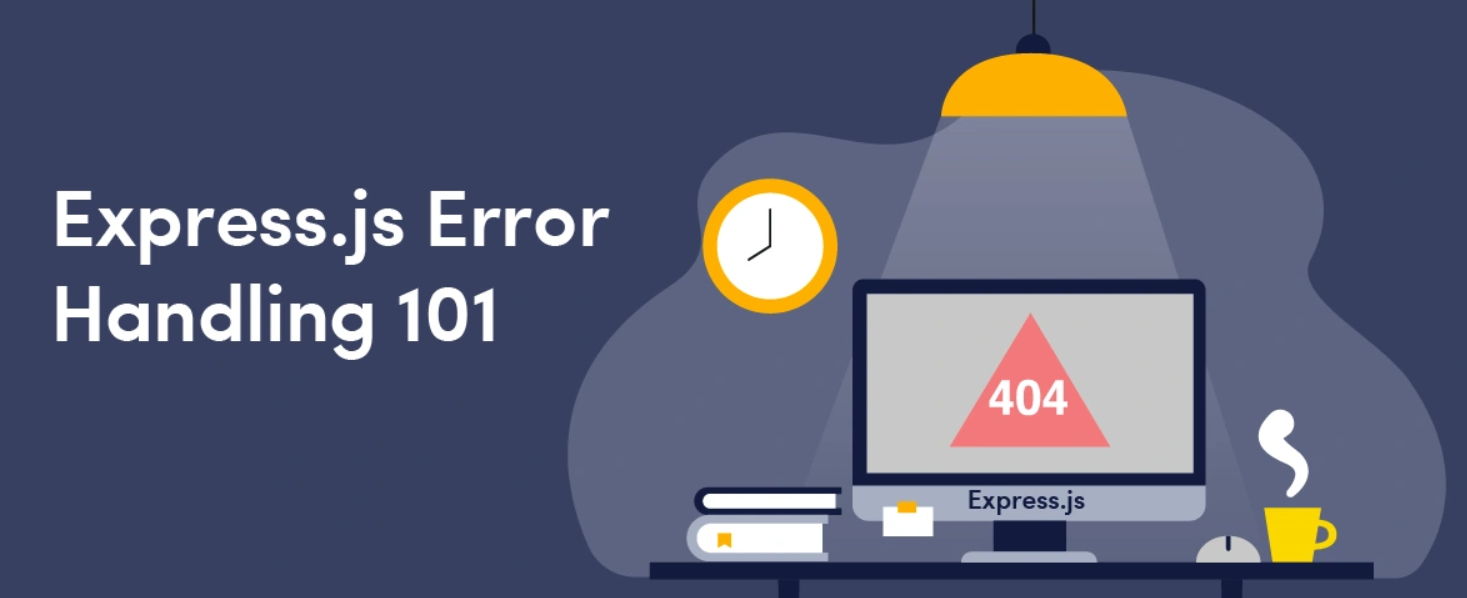Express JS
Error Handling and Logging in Express

A fundamental part of web application development is properly handling errors and logging important events, such as requests and responses. This not only helps maintain application stability but also facilitates debugging and monitoring. In this chapter, we will see how to efficiently handle errors and how to set up a logging system in Express.
Error Handling in Express
Errors can occur anywhere in an application, whether due to malformed requests, database issues, or logical errors. Express allows defining specific middleware for error handling that captures and processes these issues.
Error Handling Middleware
An error handling middleware is defined similarly to other middleware, but it accepts four arguments: err, req, res, and next. This middleware can capture any error that occurs in the application.
javascript
Handling Asynchronous Errors
In modern applications, many operations are asynchronous. Express can handle asynchronous errors using try-catch blocks and the next method to pass control to the error handling middleware.
javascript
Defining Custom Errors
We can define our own custom errors to make error handling more detailed and specific. For example, we can create a custom error class and use it in our routes.
javascript
Setting Up Logging in Express

Logging is a key practice for recording application behavior, requests, responses, and significant events. A good logging system helps identify problems quickly and improves the ability to monitor an application in production.
Using Morgan for HTTP Request Logging
Morgan is a popular middleware for HTTP request logging in Express applications. It allows us to log information about each request that comes to the server, such as HTTP method, URL, and response status.
Installing Morgan
To use Morgan, we first install it in our project:
bash
Configuring Morgan
We can configure Morgan to log requests in the console or in a log file. Below is an example of how to configure it to log requests in the console:
javascript
If we want to log the logs into a file, we can do it by combining Morgan with Node.js's fs module:
javascript
Using Winston for Custom Logging
If we need a more advanced logging system, we can use Winston, a powerful library that allows us to create different log levels and send logs to multiple destinations (console, files, or external services).
Installing Winston
First, we install Winston:
bash
Configuring Winston
Next, let's see how to configure Winston to log both to the console and a file:
javascript
Best Practices in Error Handling and Logging
- Do Not Expose Detailed Errors in Production: In production, it's important not to expose error details to end users, as this can compromise security. A generic message should be returned, and error details logged internally.
- Use Log Levels: Configuring log levels (info, error, warn, etc.) allows filtering what information is most important in a given context, such as in a development environment versus a production one.
- Monitor Logs in Production: In production applications, it is useful to monitor logs automatically using tools like
PM2or cloud monitoring services.
Conclusion
In this chapter, we learned how to handle errors in Express and set up a logging system using Morgan and Winston. Good error handling and an efficient logging system are essential to ensure the stability and security of a web application.
Support Chuck’s Academy!
Enjoying this course? I put a lot of effort into making programming education free and accessible. If you found this helpful, consider buying me a coffee to support future lessons. Every contribution helps keep this academy running! ☕🚀

Chat with Chuck

- Introduction to Express JS
- Express Fundamentals
- Request and Response Management
- Estructura de Proyectos en Express
- Authentication and Authorization in Express
- Connecting Express with Databases
- Error Handling and Logging in Express
- Sending Emails in Express
- Security in Express Applications
- Advanced Middleware in Express
- Creating REST APIs with Express
- WebSocket Implementation in Express
- Implementation of Webhooks in Express
- Testing Express Applications
- Deployment of Express Applications
- Performance Optimization in Express
- Monitoring and Maintenance of Express Applications
- Best Practices and Scalability in Express
- Course Conclusion: Express JS













